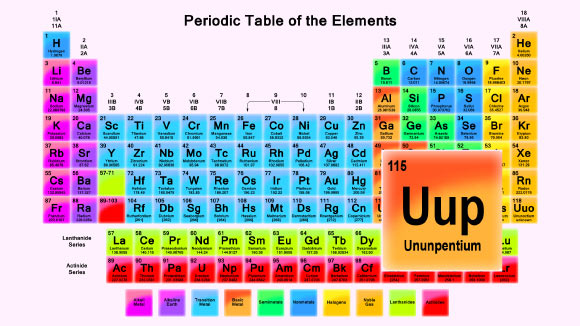An international team of physicists led by Lund University scientists has found new evidence for the existence of a synthetic super-heavy element with atomic number 115.

Electron shell of Ununpentium (Greg Robson / Pumbaa).
First observed in 2003, the element 115 has yet to be named officially, but it is temporarily called Ununpentium, or Uup. It is also known as eka-bismuth.
The name Ununpentium is derived from the digits 115, where ‘un-‘ represents Latin ‘unum‘ and ‘pent-‘ represents the Greek word for 5.
The scientists conducted their experiments at the GSI research facility in Germany. Their findings confirm earlier measurements performed by physicists at the Joint Institute for Nuclear Research in Dubna, Russia, and scientists at the Lawrence Livermore National Laboratory in the United States.
“This was a very successful experiment and is one of the most important in the field in recent years”, said Prof Dirk Rudolph of Lund University, who is a first author of a paper accepted for publication in the Physical Review Letters.
By bombarding a thin film of americium-243 with calcium-48 ions, Prof Rudolph and his colleagues were able to observe an X-ray ‘fingerprint’ of Ununpentium.
In their experiments, they have also gained access to data that give them a deeper insight into the structure and properties of super-heavy atomic nuclei.
Experts at the International Union of Pure and Applied Chemistry will review the new results to decide whether new experiments are necessary before the element 115 gets an official name.
______
Bibliographic information: D. Rudolph et al. Spectroscopy of element 115 decay chains. Phys. Rev. Lett., accepted for publication August 7, 2013








